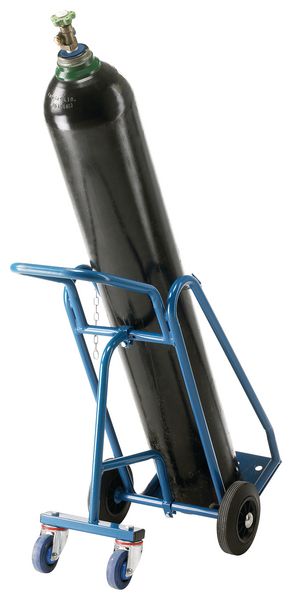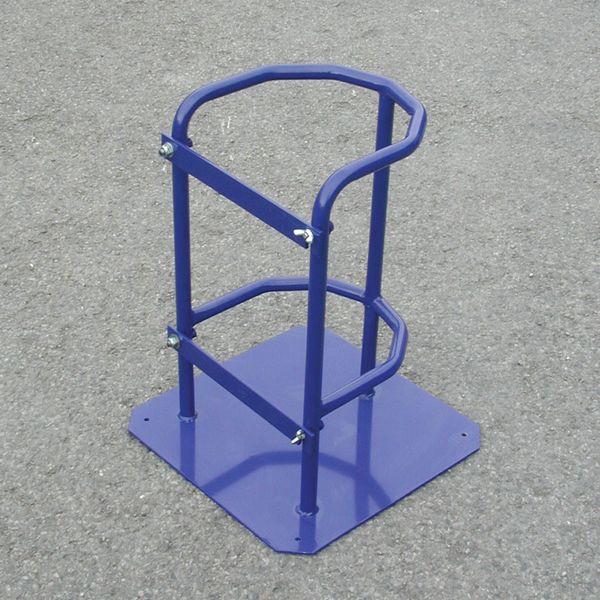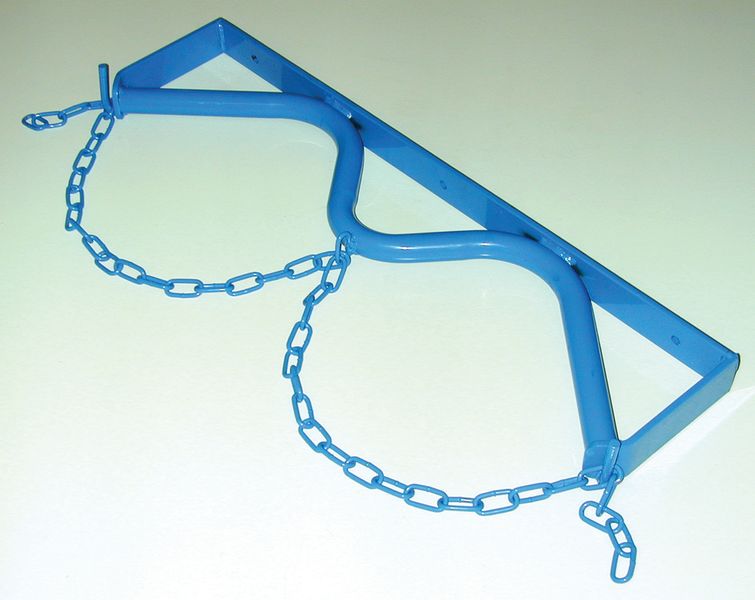-
Promotion

Tuff Collapsible Cylinder Storage Cage
£1,599.99
£1,199.99
Supplied in: Single -
Promotion

Cylinder Status Tags - Cylinder Status
£24.99
£19.99
Supplied in: Pack of 25 -
Promotion

Tall Cylinder Support Truck
£449.99
From £349.99 To £369.99
Supplied in: Single -
Promotion

Cylinder Storage Lock Up Cages - Painted
From £2,699.99 To £3,999.99Supplied in: Single -
Promotion

Heavy Duty Wall Cylinder Racks
From £159.99 To £199.99
From £129.99 To £169.99
Supplied in: Single -
Promotion

Gas Cylinder Carrier - Galvanised
£2,799.99
£2,699.99
Supplied in: Single -
Promotion

47Kg Propane Cylinder Trucks
From £159.99 To £249.99
From £159.99 To £229.99
Supplied in: Single -
Promotion

Fire Resistant Cylinder Cabinet 30
£4,499.99
£3,999.99
Supplied in: Single -
Promotion

Multi-Cylinder Trolley
£449.99
£349.99
Supplied in: Single -
Promotion

Heavy Duty Floor Fixing Cylinder Racks
From £299.99 To £449.99
From £199.99 To £349.99
Supplied in: Single -
Promotion

Cylinder Status Tags - Blank - Empty/In Use/Full
£24.99
£19.99
Supplied in: Single -
Promotion

Cylinder Storage Lock Up Cages - Galvanised
From £3,299.99 To £4,999.99
From £3,199.99 To £4,999.99
Supplied in: Single kit -
Promotion

Single Acetylene Cylinder Trucks
From £149.99 To £249.99
From £149.99 To £219.99
Supplied in: Single -

Cylinder Stand with Hinge Latch
£179.99Supplied in: Single -
Promotion

Cylinder Stands
From £259.99 To £359.99
From £179.99 To £259.99
Supplied in: Single -
Promotion

Mobile & Static Cylinder Storage Cages
From £1,499.99 To £1,799.99
From £1,399.99 To £1,699.99
Supplied in: Single -
Promotion

Single Cylinder Trolley
From £349.99 To £359.99
From £249.99 To £259.99
Supplied in: Single -
Promotion

Cylinder Transport Pallet
£999.99
£899.99
Supplied in: Single -
Promotion

Oxygen/Propane Cylinder Trucks
From £369.99 To £399.99
From £269.99 To £369.99
Supplied in: Single -
Promotion

Economy Cylinder Wall Racks & Floor Stands
From £99.99 To £329.99
From £69.99 To £299.99
Supplied in: Single -

Universal Cylinder Bracket
£59.99Supplied in: Single -

Cylinder Wall Brackets
From £79.99 To £89.99Supplied in: Single -
Promotion

Oxygen/Acetylene Cylinder Trucks
£449.99
£349.99
Supplied in: Single -
Promotion

Gas Cylinder Tags - Cylinder Capacity Status
£24.99
£19.99
Supplied in: Single -

Gas Cylinder Lockout
£48.99Supplied in: Single -
Promotion

Gas Cylinder Carriers - Painted
£2,299.99
£2,199.99
Supplied in: Single
Gas Cylinder Handling
Need help?
 Top Tips on Gas Cylinder Safety
Get UK-Approved Gas Cylinder Handling Equipment Today
Top Tips on Gas Cylinder Safety
Get UK-Approved Gas Cylinder Handling Equipment Today
Does your business use compressed gas? If so, look no further – at Seton, we have a full range of gas cylinder handling equipment designed to help you with your gas cylinder management. Accidents involving gas cylinders may result in serious or even fatal injuries, so safety is paramount when it comes to transporting, storing and using gas cylinders. From safely transporting gas cylinders to the safe use of gas cylinders, we have all the cylinder handling solutions you need. We stock a wide selection of UK approved gas cylinder equipment and accessories, including brackets, stands, cages and status labels.

Expert Information
Gas Cylinder Handling and Safety
A small gas cylinder can weigh around 20kg when filled, and 16kg when empty. Larger cylinders can weigh as much as five times this weight, so transportation should usually only be carried out using a gas cylinder lifting trolley or other handling device that is designed for that purpose. Other manual handling equipment will certainly lighten the load, but runs the risk of not holding the cylinder securely and causing accidental damage. Specialist cylinder handling solutions should always be used where long distances are involved. Physically lifting and carrying a cylinder should only be undertaken by trained staff over short distances in locations where a trolley would be inappropriate.
We have a range of trucks, trolleys and other cylinder handling equipment designed for safe gas cylinder distribution. Our choice of equipment for transporting gas cylinders includes Single Acetylene Cylinder Trucks and Dual Oxygen/Acetylene Cylinder Trucks. Both are fitted with metal chains for cylinder safety, and feature rubber wheels with small rear wheels. Other options in our gas bottle handling equipment range include our heavy-duty Multi-Cylinder Trolley , which carries up to 12 D or E oxygen tanks, and has brakes fitted on two of the swivel castors, and our 47kg Propane Cylinder Truck. Our mobile cylinder storage cage on wheels has hinged doors and can be supplied fitted with a shelf.
Forklifts can also be used for handling gas cylinders safely if you have sufficient space, and our Cylinder Transport Pallet is ideal for ensuring that cylinders are held securely while being moved. This heavy-duty item features thick sheet steel fork pockets, and ratchet straps attached to the internal frame to hold cylinders in place.
Personal protective equipment (PPE) such as safety gloves and boots should be worn while handling cylinders to reduce the chance of injury. Depending on the gas and the tasks to be carried out, other items including overalls and eye protection might also be required.
Ensure that cylinders are marked to show what is contained and that the universally recognised Globally Harmonised System (GHS) of Classification and Labelling of Chemicals is used to identify any hazards such as toxicity or flammability. To prevent moving cylinders unnecessarily, they should be tagged to show whether they are full, empty or partially used.
Transporting Gas Cylinders
The handling of compressed gas cylinders is governed by several pieces of legislation, including the Control of Substances Hazardous to Health (COSHH) Regulations 2002, the Carriage of Dangerous Goods and Use of Transportable Pressure Equipment Regulations 2009, and the Manual Handling Operations Regulations 1992 (MHOR). MHOR concerns itself with the general handling of heavy items and states that the risk of injury in doing so should be reduced as far as is practicable. This can be done by using appropriate equipment, such as gas cylinder trolleys or trucks. COSHH regulations deal with the control of the gases contained within cylinders to prevent accident or injury to staff and premises or environmental contamination, promoting the safe use of gas cylinders.Working your way through this legislation can be daunting, however, having the correct apparatus and following basic safety principles can go a long way towards mitigating risk and managing future COSHH assessments. At Seton, we have all the gas bottle handling equipment you need in one place, from trolleys and cages to brackets and racks.
Safe Storage of Gas Cylinders
Gas cylinder storage areas should always be checked to ensure that they are safe, secure and suitable for holding potentially dangerous materials. Access to cylinders should be restricted to authorised personnel, and warning signs must explain the risks and rules for handling them. Use tags to identify the status of your cylinders, such as our Gas Cylinder Tags or our Full Cylinder Status Tags.Where Should Gas Cylinders Be Stored?
There are several options for safe gas cylinder storage. Cages, carriers and racks can all be used to keep gas cylinders held securely prior to use. Many storage options for gas cylinders can accommodate a range of different gas bottle types and sizes, from a butane 7kg gas cylinder to a large oxygen container.- Cages: Gas cylinders can be held in a specialist lockable cage, such as the Tuff Collapsible Cylinder Storage Cage. Manufactured from galvanised steel, this cage can withstand all weather conditions. It comes complete with hazard warning signs, and a padlock facility so that the cage can be secured quickly when not in use. Another option is our Cylinder Storage Lock Up Cage.
- Carriers: Our Gas Cylinder Carrier - Galvanised can be used to store up to 16 Calor Gas cylinders securely, depending on the size of the cylinders. The cage includes a warning sign to indicate that the contents are highly flammable.
- Racks: For storing smaller quantities of cylinders, you can opt for wall racking, such as the Heavy Duty Wall Cylinder Racks. Each cylinder is held securely in a steel link chain, and the unit can hold up to three cylinders. It is available in galvanised steel or a blue epoxy finish. The rack has pre-drilled holes for easy fixing to the wall. We also supply floor racking and storage solutions, such as the hinged Cylinder Stand.
Because of the potential for vapours to escape, all storage areas must be well ventilated to prevent dangerous build-ups or toxic mixes if several gases are stored together. Flammable gas cylinders as well as those holding other substances should never be stored near heat sources. The safety data sheet provided by your supplier will contain specific details of restrictions regarding the items in your workplace. Our Fire Resistant Cylinder Cabinet 30 is fitted with ducts that can be connected to an exhaust system for safe and uniform ventilation. It also has adjusting aids for safe installation even on an uneven floor.
Cylinders are robust, but if one should fall over, it could become damaged, resulting in an immediate leak or an increased risk of one in future. Because of this, all cylinders must be secured when not in use using a Universal Cylinder Bracket or stand that includes a strap, chain or other holding device.
Are Gas Cylinders Safe?
Gas cylinders are safe provided that they are treated with due care and attention, with appropriate precautions being taken to avoid accidents in the vicinity. Gas bottles must always be handled with care in order to comply with health and safety guidelines, including the Manual Handling Regulations 1992. There are measures you can take to optimise safe gas cylinder management. For example, it is advisable to hold only the stocks of gas cylinders needed for your business at a given time, rather than holding surplus supplies. This makes it easier to manage the stock you have, ensuring that there is adequate secure storage capacity for the gas you hold on your premises, and using gas supplies on a first in, first out basis.Make sure that all employees are aware of the procedures for the safe use of gas cylinders, and for handling gas cylinders safely. Use signage, tags and labels to communicate gas safety information to employees, such as our Secure Gas Cylinders Symbol Sheet of Vinyl Labels . Regular checks of cylinders help to ensure that any problems are identified promptly. Corrective action should be taken immediately when issues are found.
If you need advice on any of the items in our range of gas cylinder handling equipment and storage solutions, contact the team at Seton.
FAQS
Are There Any Special Provisions That Should Be Made For Storing And Using Flammable Substances?
As well as ensuring that flammable materials are held well away from workers, ignition sources and other hazardous substances, there are several other basic rules that should be adhered to.- Wherever practical, flammable liquids or gases should be kept outdoors – if this is not possible, then internal firewalls may be required
- Never dispense or decant flammable substances in areas where other nearby items could represent a fire risk.
- Ensure that you are only ever holding and working with the minimum amount needed for reasonable use – flammable items should never be stockpiled.
- Cylinders should be marked using GHS labelling and hazard diamonds. It is also important to use signage around your site to show that combustibles are being stored and to clearly illustrate any emergency evacuation procedures.
- Make sure that all staff are trained in the handling of these items, and that they know the correct requirements and procedures for accidents involving all hazard types.


